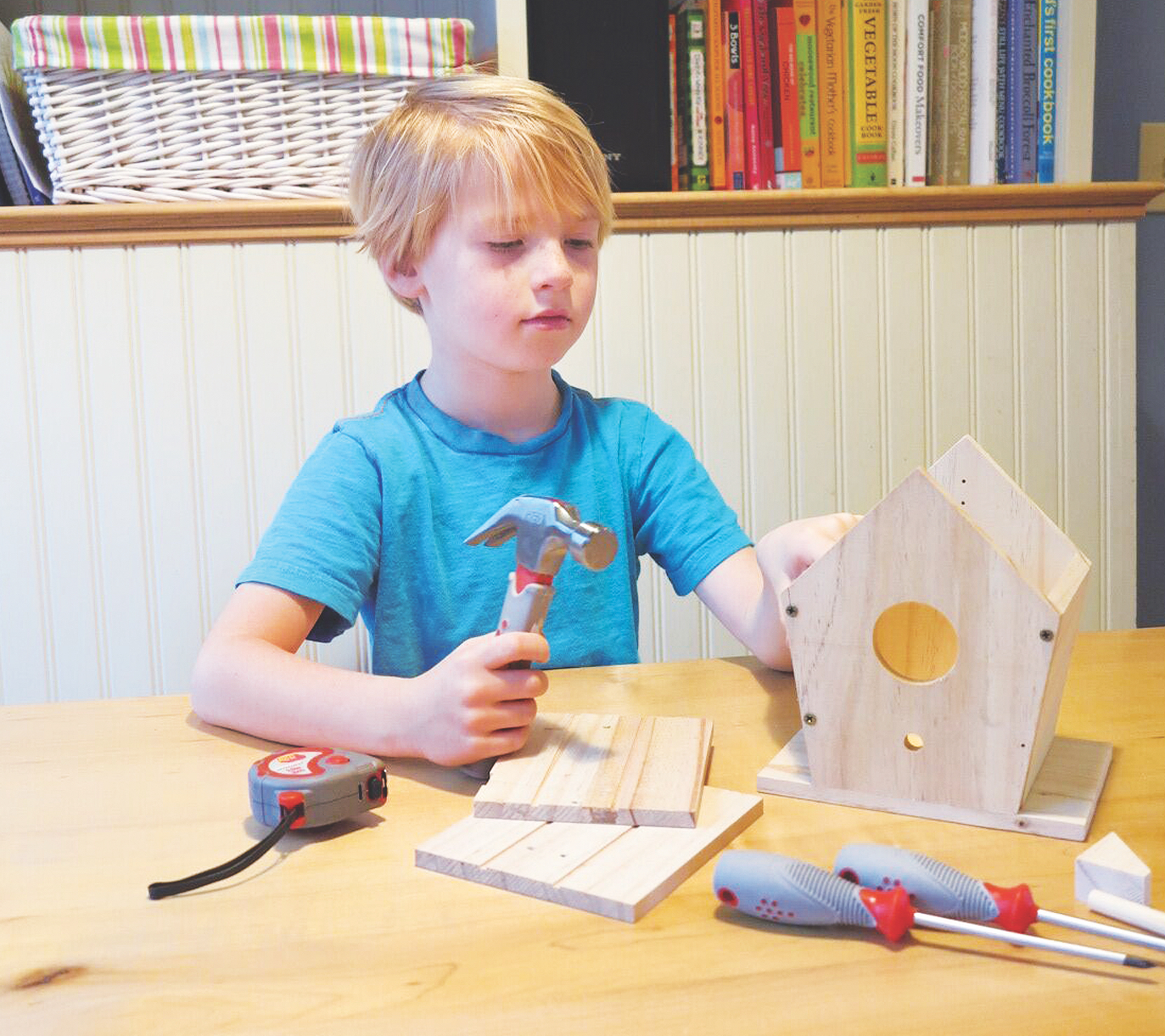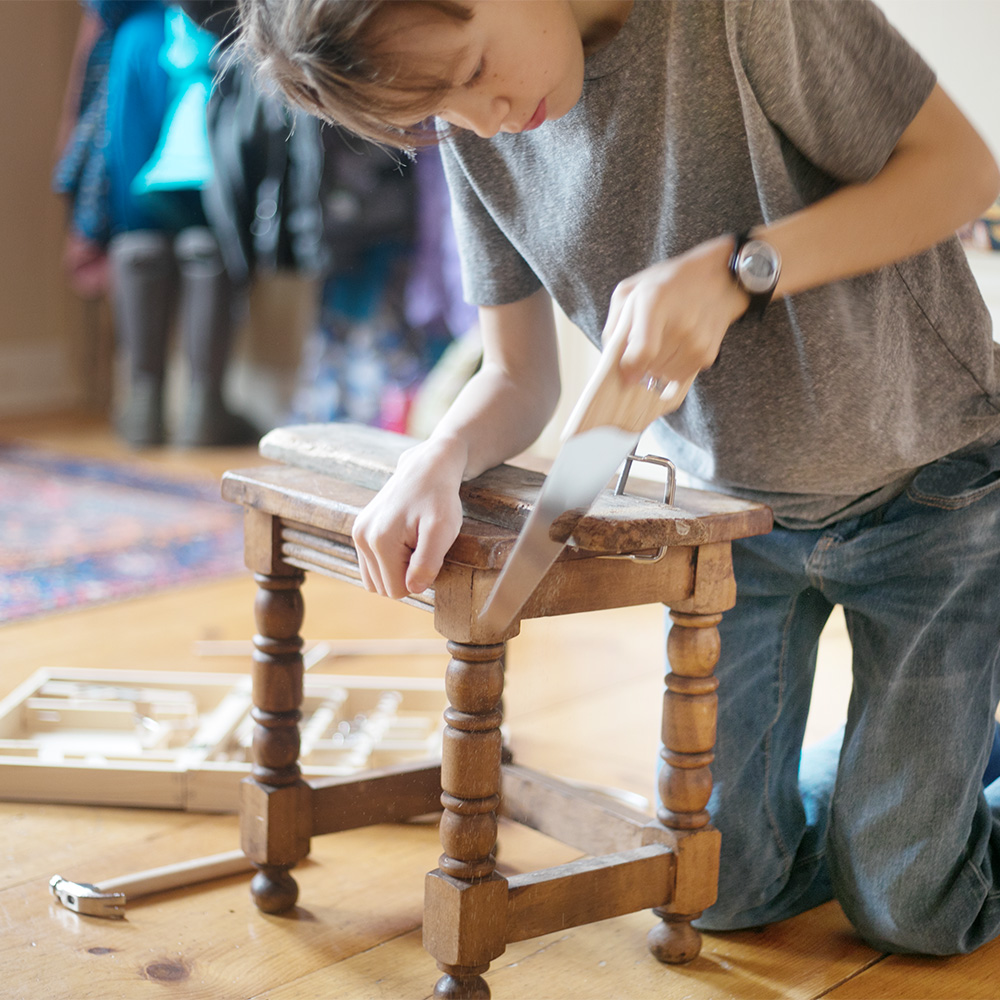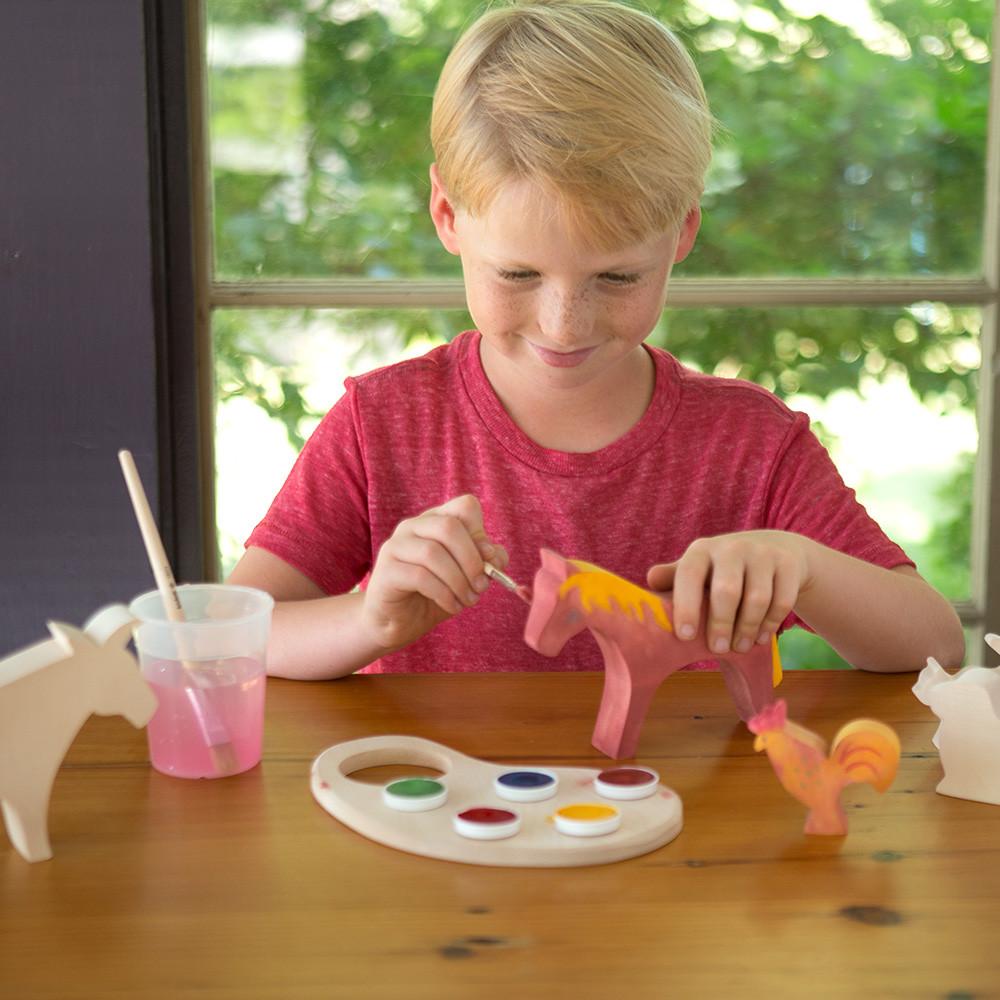Working with Wood and Children
Woodworking pleases many children. They can clearly see that their activity can lead to a change in their environment whether they are pounding nails, whittling shavings or sanding an edge to a luster. Still, it can be hard as an adult to see exactly how to safely bring this activity to your children, especially if you have limited experience with these skills.
You can actually begin woodworking through very small steps by introducing one skill and one tool at a time. If someone has gifted your child with a toolbox, use the opportunity to teach them or learn together. They will enjoy learning the names of the tools, as well as how to store and care for them. Then you can start helping them learn how each tool is used. It is important to know your child and store the tools and supervise the activity in a way that keeps them safe and respects where they are in their development.
You do not have to go out and buy lumber for their first efforts in learning woodworking. They might enjoy pounding nails into a stump, for example, as an early step in learning to use a hammer. You can break this into even smaller steps by starting a few nails in the stump, to begin with. After that, they can try to pry the nails back out with the claw end of the hammer. The same can be done with screws and a screwdriver. This allows them to experience the physicality of this work and to experiment with different screws and nails without there being a measure on whether they’ve done it “right.”
Some children will be old enough or ready for a clear sense of completing a task. For these children, you can get inexpensive kits for birdhouses, bat houses and other simple constructions. Once you’ve ascertained your child is ready for these types of activities, you might consider setting up a simple clamp and bench situation; it makes building easier and tool use can be safer. They will most likely still benefit from guidance and supervision. Depending on their age, you might also want to provide only one tool at a time. When they’re finished for the day, reinforce the idea of storing and caring for their tools. This gets everything tucked safely away and teaches good habits.
And just in case you feel uncertain that nurturing these skills is worth the effort and worry, it’s good to think of all your children can gain through woodworking. Of course, it develops eye/hand coordination and dexterity; pounding one nail or keeping the tip of a screwdriver lined up with the head of a screw can make that clear. It also teaches problem-solving and creative thinking, especially as they begin their first constructions; it can be very difficult to figure out how to keep the first two walls of a birdhouse together. They have to work out an order of operations that will give the desired outcome. They also will have real experience with measurement, numbers, and fractions when they begin using a saw and tape measure.
Finally, there is the confidence that comes with each new skill. When children learn to use even the most basic of the woodworking tools, they are learning things that they can carry through life. These are skills with clear utility they will have at the ready wherever their lives lead them.



